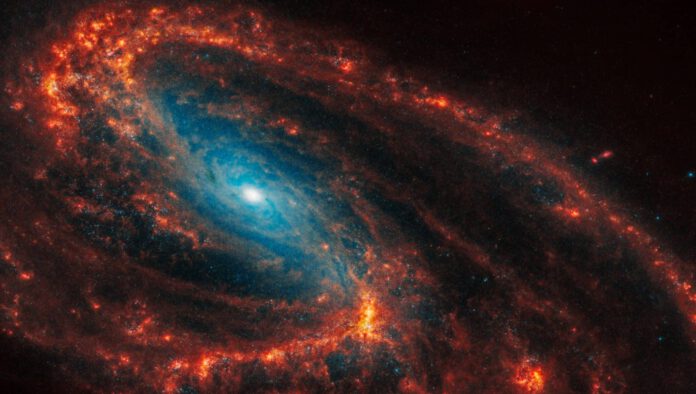
Marveling at the Diversity of Spiral Galaxies Through the James Webb Space Telescope
Just as every individual is unique, so are spiral galaxies. The James Webb Space Telescope turned its focus on nineteen spiral galaxies, revealing a variety of structures. The images captured tell us where stars, gas, and dust are located in these galaxies.
The infrared pictures assist scientists in learning more about spiral galaxies. This information can help improve computer simulations, thus providing more insight into the formation and evolution of spiral galaxies. This is particularly valuable as our own home galaxy, the Milky Way, is also a spiral galaxy with a central bar.
Capturing Millions of Stars
Thanks to NIRCam, millions of stars have been photographed in these nineteen spiral galaxies. These stars can be identified as blue spots. Do you spot bright clusters? Those are groups of stars. The James Webb’s MIRI tool has been used to map out the glowing dust among the stars. This tool can also detect protostars, which are stars not yet fully formed and hiding in dust cocoons. In addition, astronomers observe large, circular shells of gas, possibly formed by exploded stars or supernovae.
The Inward Growth of Galaxies
Astronomers believe that galaxies expand from the inside out. The earliest stars form near the center, after which star formation spreads outward. The further a star is located from the center, the greater the chance it’s a young star. The images reveal many blue spots near the galaxies’ centers, but these are in fact old stars.
The images above already revealed four galaxies. Here, the other fifteen images follow. Click on the photos to download a larger version, for example, as a background for your phone.











